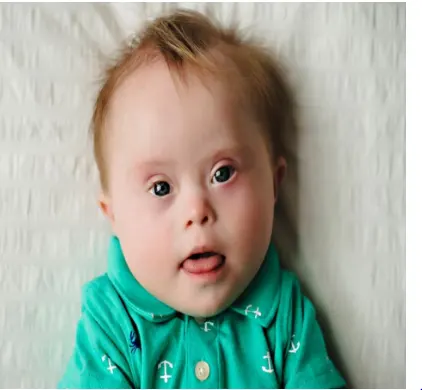Down syndrome is the most common chromosomal condition that a baby can be born with. Around 1 in every 1,000 babies born in Australia has Down syndrome. Down syndrome is also known as Trisomy 21. People with Down syndrome usually look different from other people and may have some difficulty learning new things.
Normally, every cell in the human body — except egg and sperm cells — has 46 chromosomes. The egg and sperm cells normally have 23 chromosomes each.
The most common cause of Down syndrome is when an extra copy of chromosome 21 randomly appears in either the egg or sperm. At conception, when the egg and sperm meet, the extra copy of chromosome 21 grows throughout all of the embryo’s cells, giving them each 47 chromosomes instead of the usual 46.
Less commonly, the extra copy of the chromosome can appear in some of the embryo’s cells after conception. This is called mosaicism and results in some cells having 46 chromosomes and some having 47.
Another rare form of the syndrome is caused by ‘Robertsonian translocation’. This occurs when a piece of chromosome 21 breaks off and becomes joined to another chromosome before or after conception. In this case, the embryo’s cells will all have 46 chromosomes, but each cell still contains an extra copy of chromosome 21.
About 1 in every 2 babies born with Down syndrome will have heart problems and approximately 1 in 10 will have gastrointestinal (gut) problems. Hearing and vision problems are also more common in people with Down syndrome.
Pregnant women are offered routine antenatal tests at different times during pregnancy and for different reasons. These include screening tests, such as ultrasounds and blood tests, that can help estimate your baby’s risk of being born with a range of conditions, including Down syndrome. Non-invasive prenatal testing (NIPT) is a new blood test that can be done as an alternative screening test.
Diagnostic tests (such as chorionic villus sampling or amniocentesis) will show whether a baby actually has Down syndrome. After the baby is born, chromosome testing from a blood sample, may be done to confirm Down syndrome.
There is currently no way to prevent or cure Down syndrome. Prenatal testing allows you and your family to make informed decisions, including ending the pregnancy. For this reason, before you have the test it’s a good idea to think about why you are choosing to do it, and how you will feel once you get the results.









